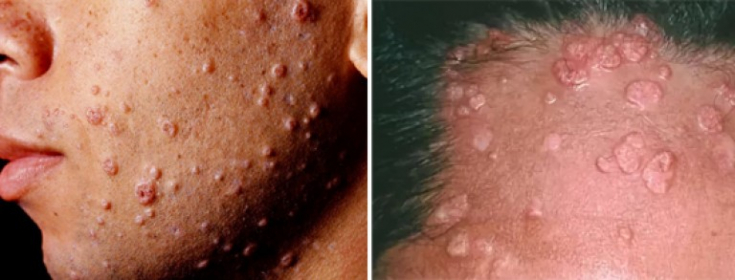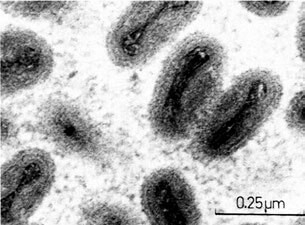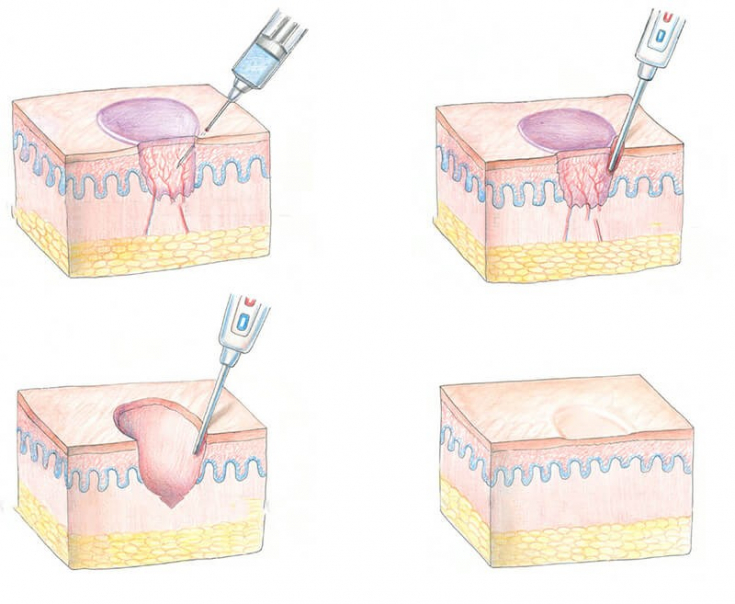Molluscum contagiosum is an anthroponotic viral infection of the epidermis with a benign course. The disease is caused by a virus of the genus Molluscuscipoxvirus from the family Poxviridae. Among children the most common type is MCV-1, in adults the type MCV-2 is most common due to sexual transmission. Skin lesions caused by molluscum contagiosum significantly reduce the quality of life of patients, accompanied by external cosmetic defects. Let's talk on estet-portal.com about the clinical picture, diagnosis and principles of treatment of the disease.
- Clinical course of molluscum contagiosum in adults
- How to correctly diagnose molluscum contagiosum: features
- Invasive treatment of molluscum contagiosum: laser therapy, cryotherapy, curettage
Clinical course of molluscum contagiosum in adults
In adults, infection with Molluscum contagiosum most often occurs through sexual contact. The disease in most cases is asymptomatic, sometimes accompanied by itching.
Treatment and prevention of human papillomavirus infection: international guidelines
The rashes are pale pink papules, healthy skin color. They are spherical or hemispherical formations with a diameter of 1-3 mm.
Follow us on Instagram!
In the form of solitary nodes they can reach up to 5-10 mm in diameter. In the center of the papules, there is a central indentation. When pressing with tweezers on the papules, a mushy mass of gray-white color .
Most often, such skin lesions in molluscum contagiosum are localized on the skin of the hands, neck, faces, upper chest, inner thighs, genitals and anogenital area.
Also among the eruptions there are elements of pearly white, with a sheen in side lighting.

In HIV-positive patients, molluscum contagiosum may present with numerous small or isolated giant features on the face.
In case of atypical course diseases are isolated:
- Solitary form – often missing central recess
- Endophytically developed mollusk – predominantly located on the soles; palpated as a superficial induration, induration with a depression in the center
- Exophytic molluscum contagiosum – "giant"
- Molluscum contagiosum on stalk
- Cystic type.
How to correctly diagnose molluscum contagiosum: features
For the diagnosis of the disease, the main ones today are enzymatic immunoassay and polymerase chain reaction. Microscopy of the content of papules allows to reveal viral particles located intracellularly.

Fig.1 Electron microscopy image of molluscum contagiosum
During the pathohistological examination, limited proliferation and degeneration of the spinous layer of the epidermis, divided by narrow radial layers of connective tissue into separate lobules, is determined. Cells lose their structure, homogenize and vacuolize: basophilic granules and eosinophilic hyaline formations are observed – "mollusk bodies" that reflect light.
Follow us on Facebook!
In the case of atypical course of molluscum contagiosum, it is necessary to differentiate the disease from flat warts, basalioma, syringoma, xanthoma, xanthelasma, nevoxantoendothelioma.
Invasive treatment of molluscum contagiosum: laser therapy, cryotherapy, curettage
The main method of therapy for molluscum contagiosum is destruction of the focus in loсo.
The choice of technique depends on age, the prevalence of elements (single or disseminated), comorbidities.
Removal of foci by cryotherapy is widely practiced. Each element of molluscum contagiosum is exposed to liquid nitrogen for 6-20 seconds.
Removal of dermatological formations with cryotherapy
If the elements persist, it is recommended to repeat the procedure in a week. The cryotherapy procedure can cause pain, local discoloration of the skin and the formation of mild scarring.

One of the effective methods is laser therapy with CO2 laser or pulsed dye laser with the following characteristics:
- wavelengths – 585 nm,
- frequency – 0.5-2 Hertz,
- spot size – 3-7mm,
- wave density – 2-8 j/cm2,
- pulse duration – 250-450ms.
If elements persist after laser therapy, re-destruction is recommended after 2-3 weeks.
An alternative method is to apply organic acids to the molluscum contagiosum lesions.
Molluscum contagiosum treatment: to be or not to be
It is also recommended mechanical removal of elements of molluscum contagiosum by curettage. After the procedure, the formation of small, slightly sunken scars is possible.
To eliminate recent rashes, it is recommended to use a method such as evisceration – husking elements of molluscum contagiosum with fine tweezers.
To reduce pain and discomfort during the destruction of molluscum contagiosum lesions, it is recommended to use local anesthesia.
Molluscum contagiosum is a highly contagious disease. Patients with active lesions should be advised to refrain from sexual intercourse during therapy and to examine the partner.
More interesting stuff on our YouTube channel:







Add a comment